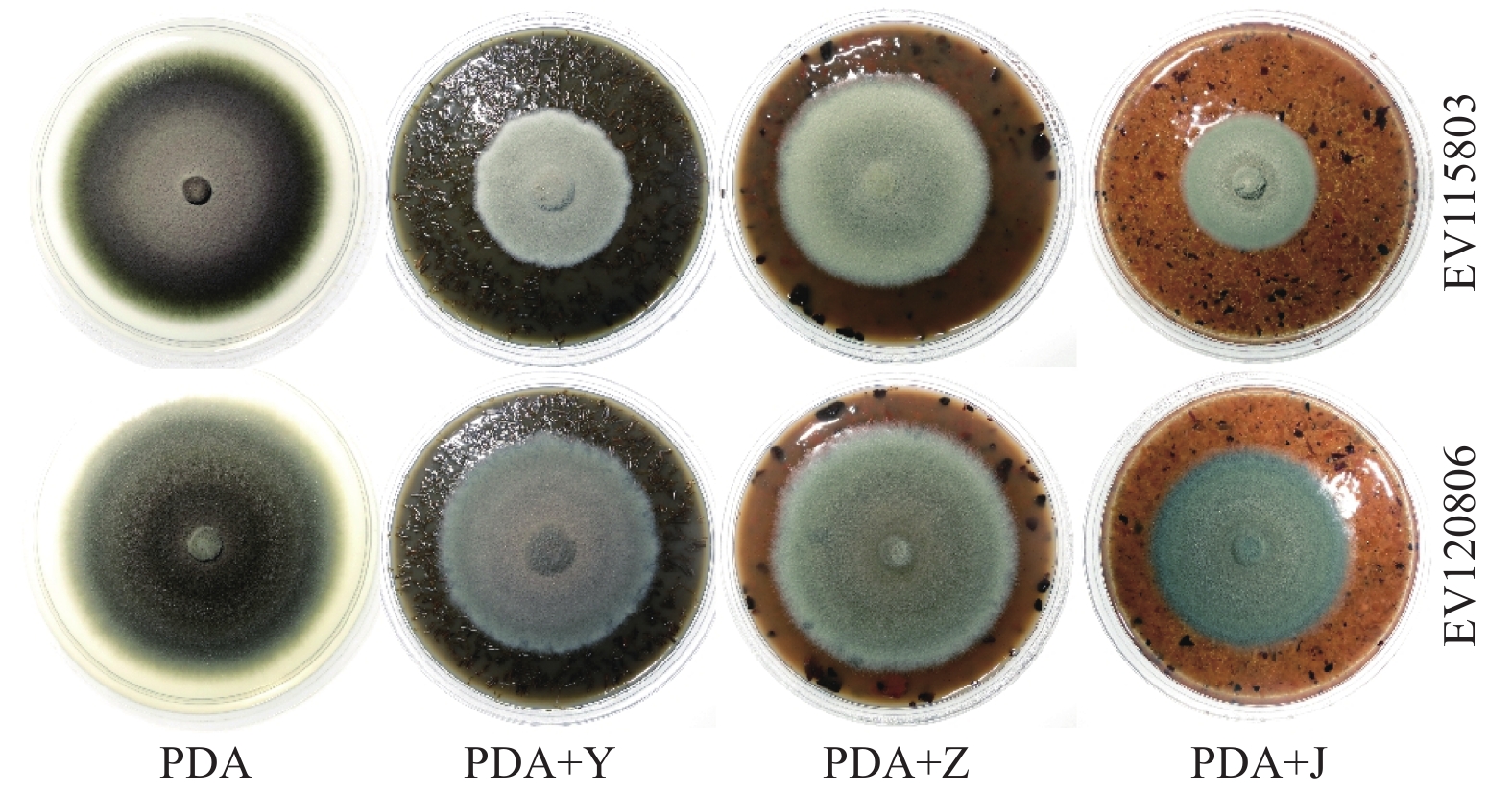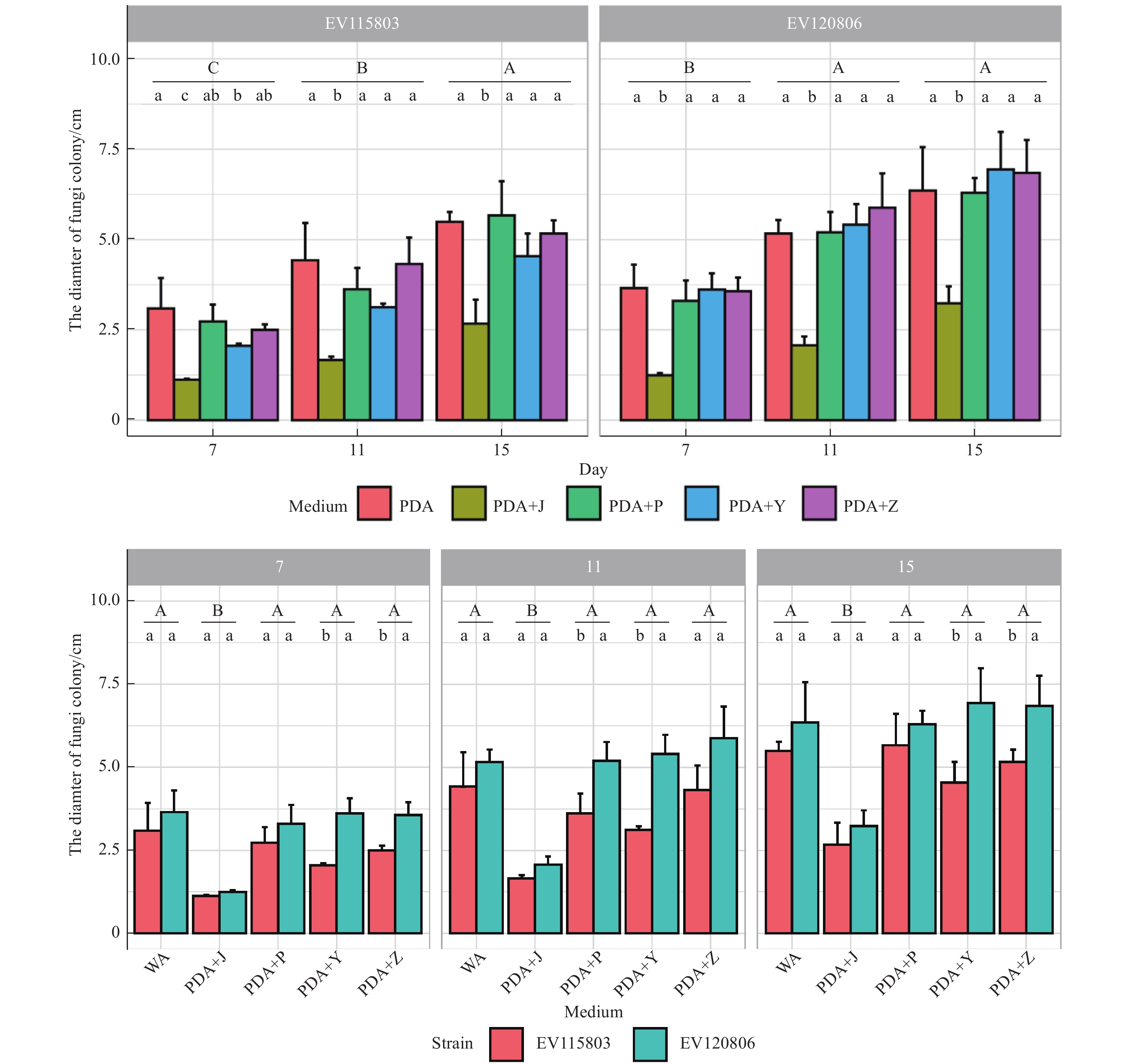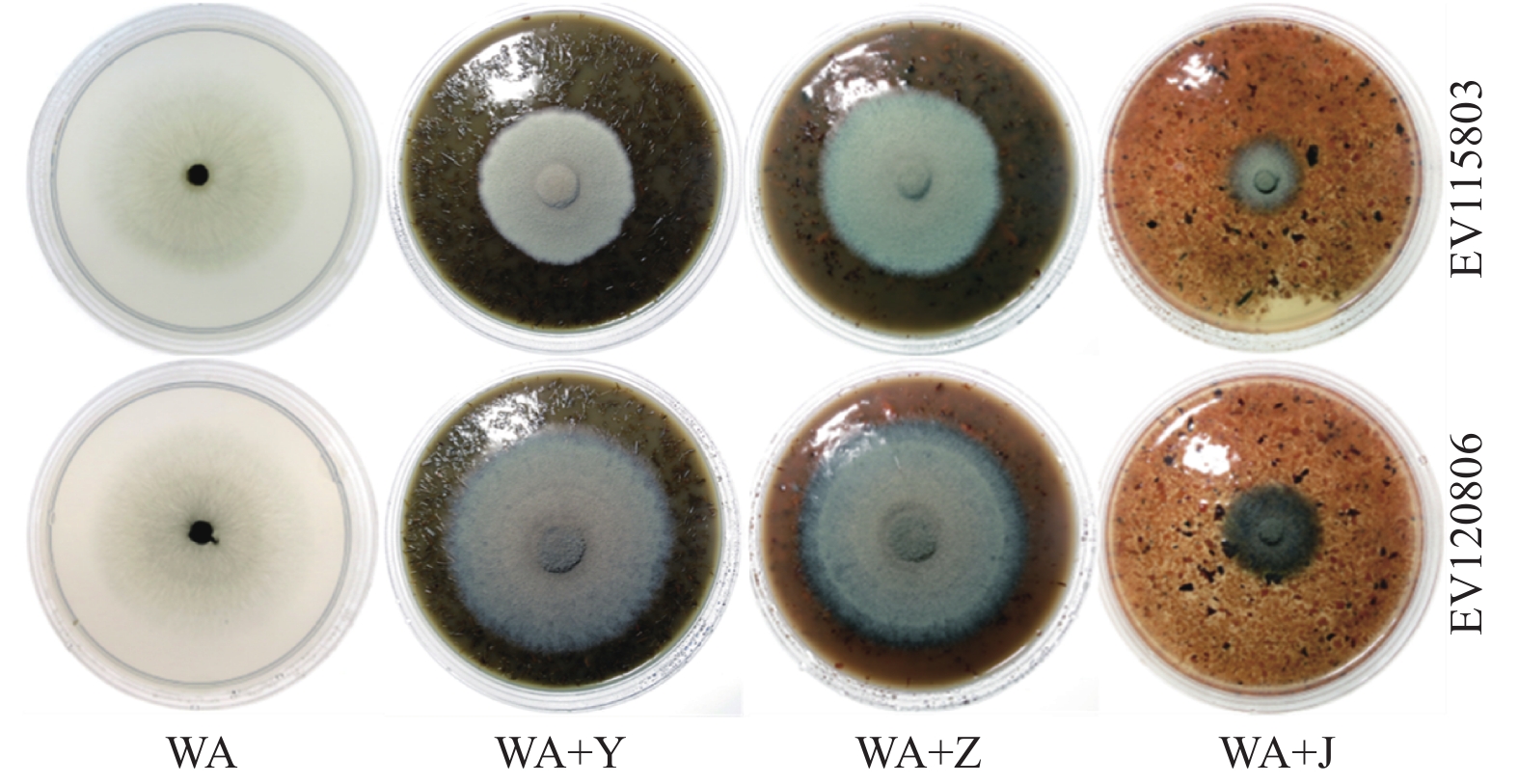-
松材线虫病(Bursaphelenchus xylophilus)是全球公认的检疫性有害生物,是松树最大威胁,曾给亚洲和欧洲等部分国家或地区造成了毁灭性生态损害和显著经济损失[1-2]。目前,我国对松材线虫的防治手段主要有化学防治、物理防治、生物防治等,但仍以化学防治为主,如使用化学药剂久效磷、甲胺磷、阿维菌素等进行点滴注干。虽然该方法可以取得较好的防治效果,但长期使用,易对环境造成危害,而且易使线虫产生抗药性[3]。在国际上,还未见有对松材线虫进行直接大规模生物防治的实例,因此,对松材线虫开展生物防治还需要加快深入研究[4]。
伊氏杀线真菌(Esteya vermicola,EV)属于食线虫真菌,是松材线虫的内寄生真菌,它产生的新月形孢子能够在短时间内侵染并杀死松材线虫。因其对松材线虫具有高感染性和较强致死性,该菌有潜力成为生防菌株[5-7]。若EV菌成为共生真菌共存于松树体内,则有望更高效地防治松树松材线虫。本试验通过一组试验设计,测试适宜EV真菌生长的pH范围,研究EV菌在加有松树不同部位材料的培养基上的生长繁殖情况,探讨EV菌在松树体内定殖的可能性。
HTML
-
Esteya vermicola CBS115803 (EV115803)和CNU120806 (EV120806)。分别购于荷兰微生物菌种保藏中心和韩国微生物保存中心。
-
PDA培养基:马铃薯葡萄糖培养基(美国BD公司),按照说明书每升水加入24 g培养基和10 g琼脂。121 ℃高温高压灭菌20 min。将刚经灭菌的培养基冷却至40 ~50 ℃,加入相应量的浓盐酸和10M NaOH,将培养基pH值分别调至3、4、5、6、7、8、9、10、11、12、13、14,后倒平板。待平板凝固后,在平板中央接种新鲜EV菌饼(直径5 mm),置于25 ℃恒温箱中培养,每个pH处理重复3次。
WA培养基:每升蒸馏水中加入10 g琼脂,后经高压灭菌。
黑松(Pinus thunbergii Parl.)材料于2014年采自中国林科院(北京)院内,树龄约35 a,选取1~5年生新鲜小松枝及松针,分为松针、松树皮、松针附着的小松枝和木质部4个部分,用小型粉碎机粉碎,获得松针粉末(Y)、松树皮粉末(P)、松针附着的小松枝粉末(Z)和木质部的锯末(J)。
将4种松树成分分别加入到PDA和WA这两种培养基中,按50 mL的培养基分别添加5 g的Y、P、Z、J(质量与体积比为10%)比例,配制成PDA+Y、PDA+P、PDA+Z、PDA+J、WA+Y、WA+P、WA+Z、WA+J 8种培养基,以上培养基PDA和WA均为自然pH值,pH值为6.5左右。121 ℃灭菌20 min,制成含松树基质的培养基。分别接种EV115803和EV120806活菌菌饼(直径5 mm),置于25 ℃培养,每天观察和测量菌落的生长情况。
-
在加有不同松树部位材料的培养基上生长15 d的菌落边缘打取3个菌饼,放入1 mL蒸馏水中,震荡10 min,获得孢子悬浮液,在光学显微镜下观察和拍照。
-
利用ANOVA进行方差分析,并利用F-test检验各个主因素及交互的显著性。若主因素及交互作用不显著,则将其剔除并重新分析。所有分析及绘图均在R中完成(版本号3.5.0)。
1.1. 试验菌株
1.2. 培养基的配制
1.3. 显微形态观察
1.4. 统计分析
-
通过观察和测定EV菌在不同pH值培养基上的菌落生长情况,发现两株EV真菌在pH5~13培养基上均可生长,但在pH≤4的平板(琼脂不凝固)上不能生长。这两株EV菌生长速度存在明显差异(图1)。由图1可看出,在pH 5~8平板上,菌株EV115803菌落直径均大于EV120806菌落直径。在pH 5~7时,两菌株菌落直径均差异显著。在pH 9~13时,EV120806菌落直径均大于EV115803菌落直径,但只在pH 10时EV115803和EV120806菌落差异显著。同株菌株比较,菌株EV115803在pH 7时菌落直径最大,菌丝的延伸速度最快。而EV120806在pH 10菌落直径最大,菌丝生长速度最快。当pH值>7时,随pH值的增加,两株EV菌菌落颜色逐渐变浅,气生菌丝菌体量少于酸性条件下的菌体量(图2)。
-
在培养至3 d时,与PDA对照相比,菌株EV 115803和EV120806在PDA+Y、PDA+P、PDA+Z上气生菌丝体发达茂盛,但在PDA+J培养基上两个菌株则未见生长。当培养至5 d时,EV115803和EV120806在PDA+J上才见菌体生长。在PDA+J上,EV120806较EV115803生长的快,前者几乎是后者的两倍。当培养至7 d、11 d和15 d时,菌株EV115803在PDA上菌落直径分别达到3.7 cm、6.2 cm、8.3 cm。菌株EV115803在PDA+P、PDA+Z、PDA+Y和PDA+J上生长较慢,其中在PDA+J上的菌落生长速度最慢(图3上)。菌株EV120806表现不同,除对照PDA外,该菌在PDA+Z上菌丝生长速度最快。值得关注的是,在7 d时,菌株EV120806在PDA+J上的生长速度显著高于EV115803,在11 d和15 d时亦是如此(图3下)。
从图4可以看出,在PDA中添加松树成分,均可促进两个菌株的菌落生长,气生菌丝发达,浓密。在PDA上,添加松树成份更易促进菌株EV120806生长。生长至30 d时,EV120806在PDA+J上的菌落直径为8.9 cm(长满整个平板),而EV115803在PDA+J上的菌落直径才6.8 cm。菌株EV120806产生弯月状孢子的数量(15 d观察时极少有杆状孢子)也多于菌株EV115803(图片未显示)。
-
菌株EV115803和EV120806在WA+Y、WA+P、WA+Z上气生菌丝发达茂盛,但与PDA+上生长相比,其菌落稀疏。对EV115803菌株来讲(图5上),在15 d时,在WA+P上生长的菌落直径最大;对于EV120806菌株来讲,在15 d时,在WA+Y上生长的菌落直径最大。当两株真菌在培养至7 d、11 d和15 d时,EV120806菌株在WA、WA+J、WA+P、WA+Y和WA+Z上的菌落生长速度均大于EV115803菌株(图5下)。
从生长数据和菌落形态看(图5和图6),2个菌株对松针、枝条和树皮(WA+Y和WA+Z、WA+P)的适应能力强,气生菌丝发达,菌丝生长速度快。在WA+J(木质部锯末)上生长较慢。生长至30 d,EV120806在WA+J上的菌落直径为6.0 cm,而EV115803在WA+J上的菌落直径仅为4.7 cm。
2.1. pH值对EV菌生长的影响
2.2. PDA中添加松树成分对EV菌生长的影响
2.3. WA中添加松树成分对EV菌生长的影响
-
通过配制不同pH值的培养基试验,发现供试2株EV菌株的最适pH不同。2株EV菌可以生长的的pH值范围很广(5~13),且在酸性条件下产生更多的气生菌丝。通过添加松树不同部位成份试验,在有外源营养的条件下,如在PDA上添加松针、松树皮、松树枝条和木质部锯末对EV菌生长均具有一定的刺激作用,表现为气生菌丝茂盛,单位面积的菌体量增多。当在WA上添加松针、松树皮、松树枝条成分时,2株EV菌也能茂盛生长,但以木质部锯末为单一营养源时EV菌则生长缓慢。
-
在EV菌细胞内存在假单孢属的共生细菌[5]。据文献报道,许多真菌具有较宽的pH生长范围(如pH 4~11)[8]。食线虫真菌Duddingtonia flagrans在pH<13的碱性条件下均可以生长[9]。近缘毛壳菌(Chaetomium subaffine)生防菌株可以在pH 13时仍可生长[10]。非嗜极细菌可生长的pH范围为5.5~9.0[11],专性嗜碱微生物可在pH 11~12的条件下生长,但在中性pH条件下却不能生长。例如,巴氏芽孢杆菌 (Bacillus pasturii)、嗜碱芽孢杆菌 (B. alcalophilus)等细菌。一种黄杆菌 (Flavobacterium)能在 pH 11.4的条件下生长[10]。而EV菌能在pH 13的条件下生长,说明其耐碱性极强,可能与其细胞内存在的细菌有关。
-
目前,在全球范围共分离出6株EV菌(CBS 156.82、CBS 100821、ATCC 74485、CBS 115803、CNU 120806、NKF 132229)[11-13],有2株(CBS 156.82和ATCC 74485)是从松树(Pinus sp.,P. thunbergii Parl.)中分离到的。尽管本研究所选用的2株EV菌的原始分离基质不是松属植物,如EV115803是从橡树中分离到的,而EV120806是从松林的土壤中分离到的,二者可在添加有松树成分的培养基上生长,对气生菌丝生长有刺激作用。试验结果表明,EV菌可耐受松树的抗菌物质,如松脂等。松树木质部锯末中的主要成分是木质素和纤维素,EV菌也可以在松树木质部锯末中生长,虽然生长速度显著低于松针、树皮和松枝,作者推测可能是由于锯末(木质部成分)中的松脂含量高,或是需要合成一些降解木质素或者纤维素的酶,需要较长时间调整代谢所致。许多研究表明,将生防真菌(如昆虫病原真菌)引入植物中作为共生真菌,以此产生抗菌作用或是对昆虫的摄食产生威慑作用是可行的[14]。目前,已经报道的作为植物共生菌的生防真菌有Beauveria bassiana[15-20],Clado-sporium spp.[21],Lecanicillium dimorphum[22]等。因此,未来有望将EV菌定殖在松树中做为共生菌,摄食入侵的松材线虫,从而使松树具有内源的防控因子,对松材线虫起到防控作用。
-
据作者初步观察,EV菌在PDA上生长后期(如15天后),在菌落中央会产生大量的白色粉状的杆状孢子,菌落中央颜色较边缘浅,EV115803更易产生杆状孢子。在PDA上添加松树成分,可以促进EV菌气生菌丝体生长,而且促进弯月状孢子生长,其中以菌株EV120806最为明显。相比EV115803,EV120806或许是一个较好的菌株,有待进一步试验。我们推测,松树中的某种成分可能诱导EV菌弯月形孢子大量产生。
3.1. EV菌是一种很强的耐碱微生物
3.2. EV菌能否作为共生菌在松树体内定殖?
3.3. EV菌不同培养对孢子产生的影响
-
通过pH和以松树不同部位为培养基的试验,发现EV菌适应的pH值范围为5~13,EV菌耐碱性极强,且EV菌在加有松树各部位成分的培养基上均能够生长,相比EV115803,菌株EV120806对松树培养基的适应性更强,未来有望将EV菌定殖在松树中做为共生菌,摄食入侵的松材线虫,从而使松树具有内源的防控因子防控松材线虫。

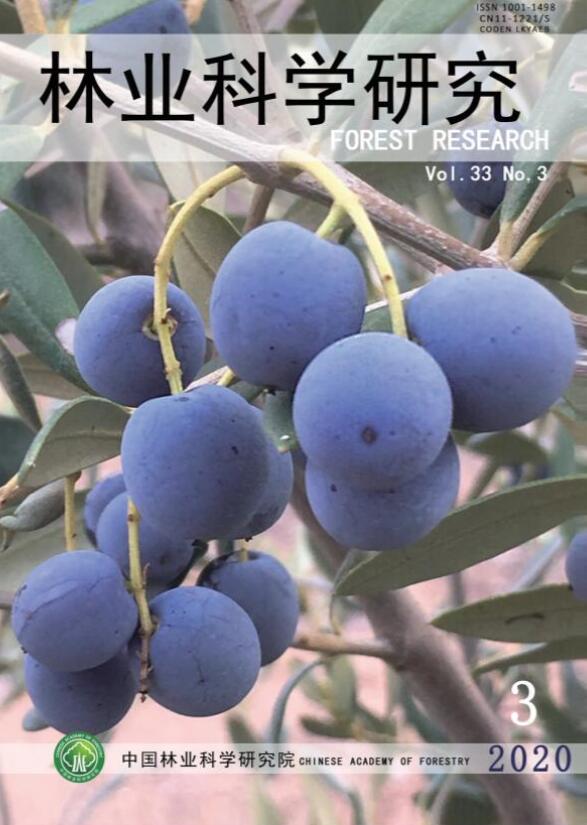


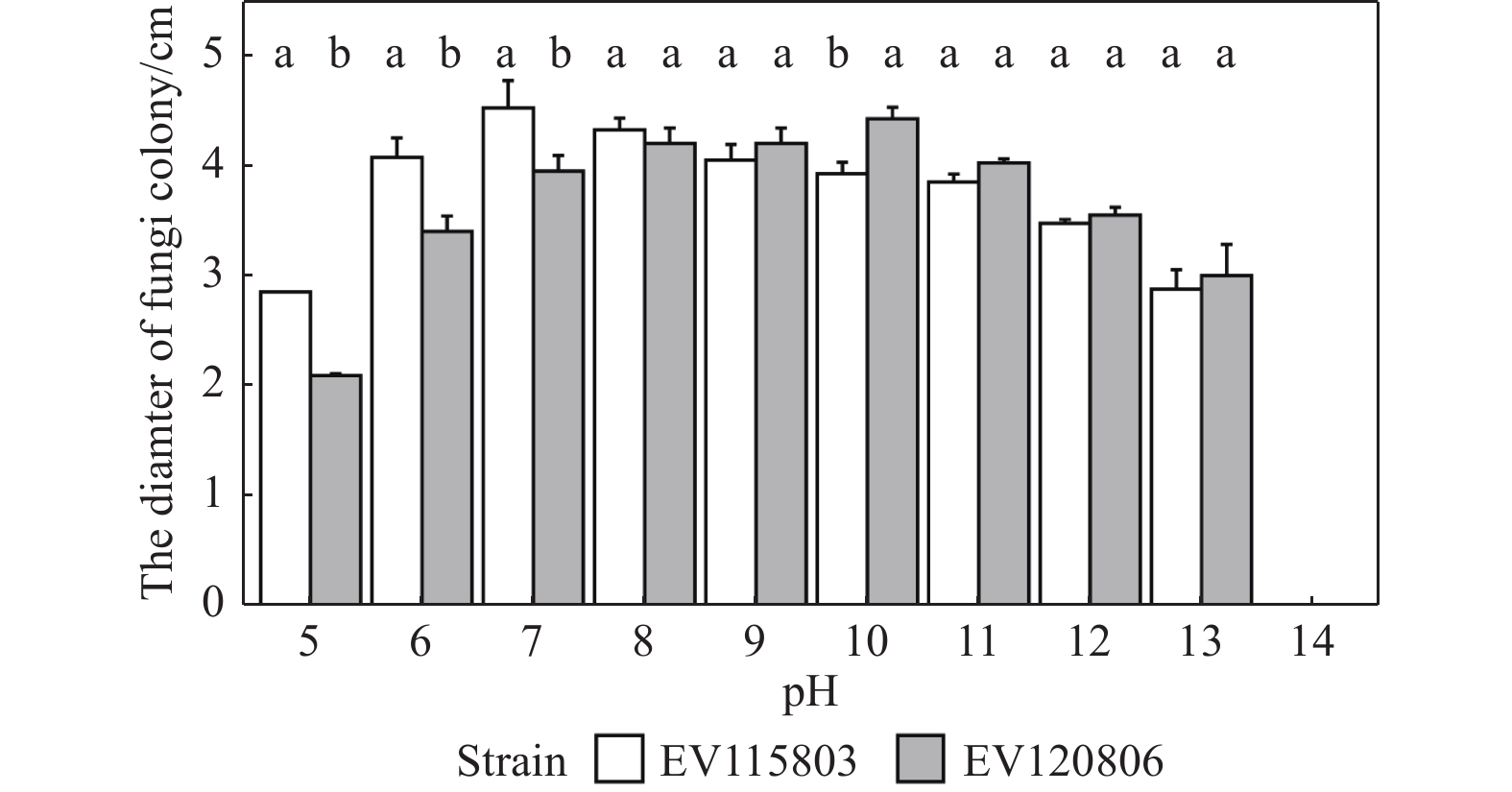

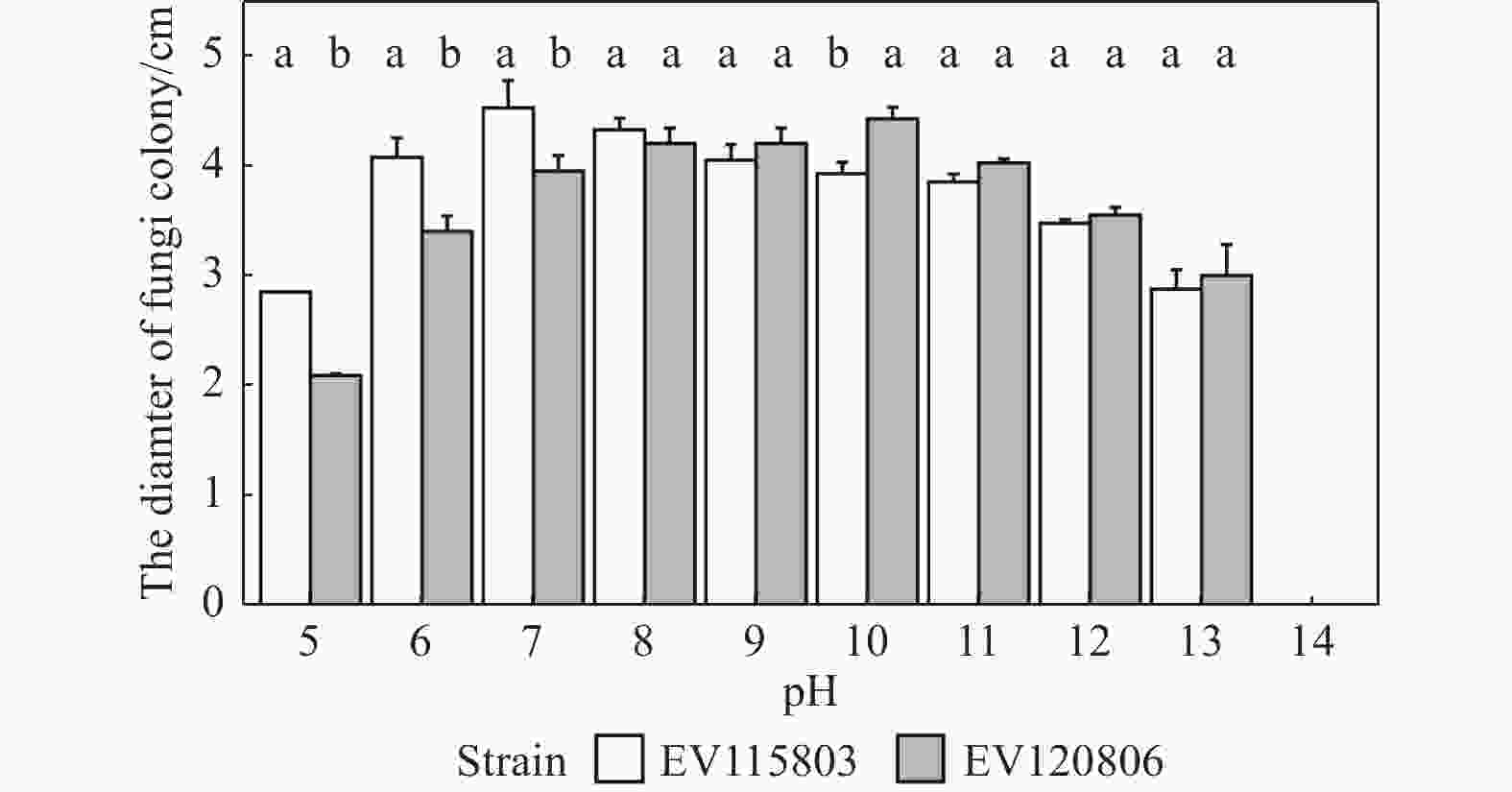

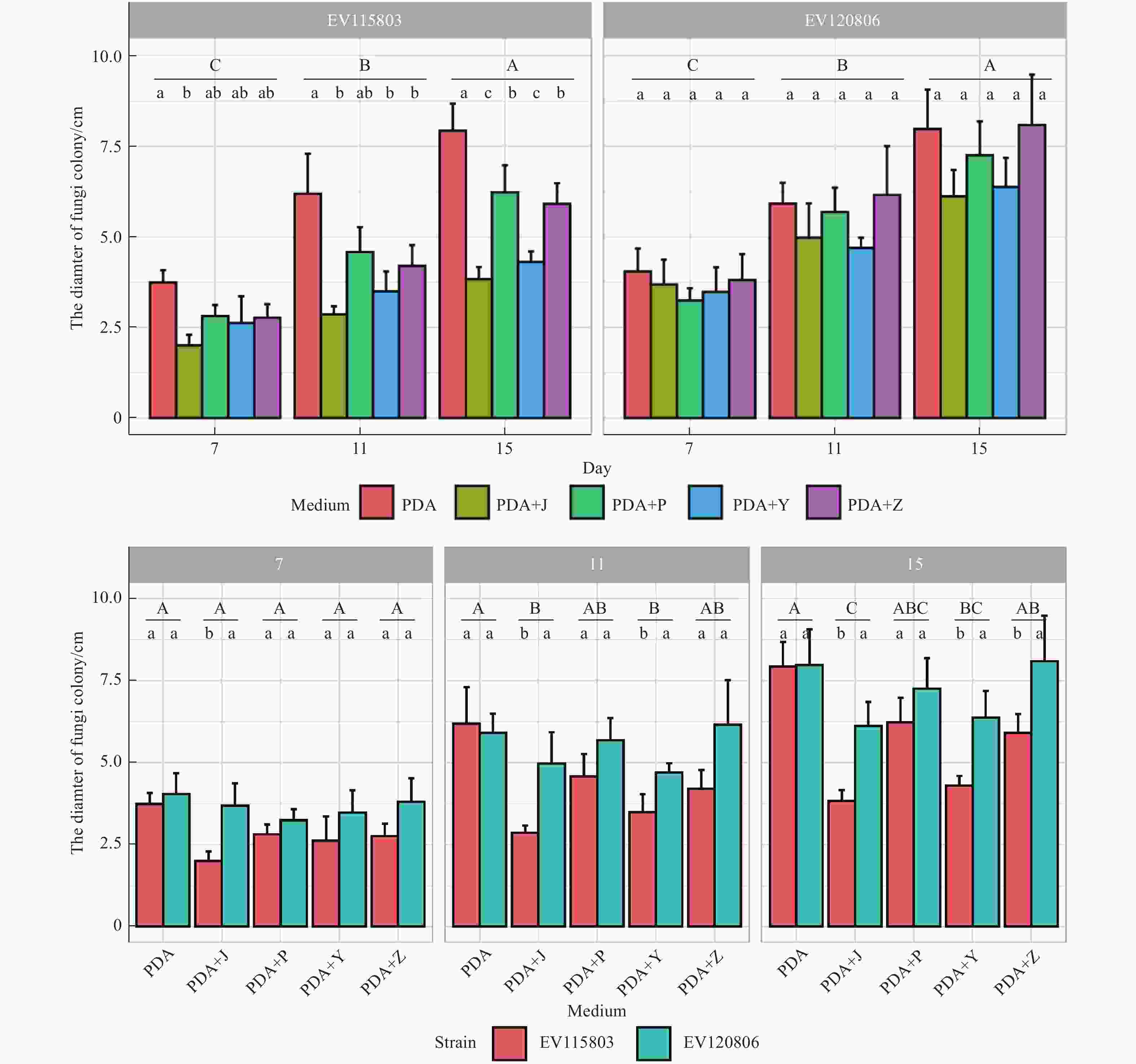
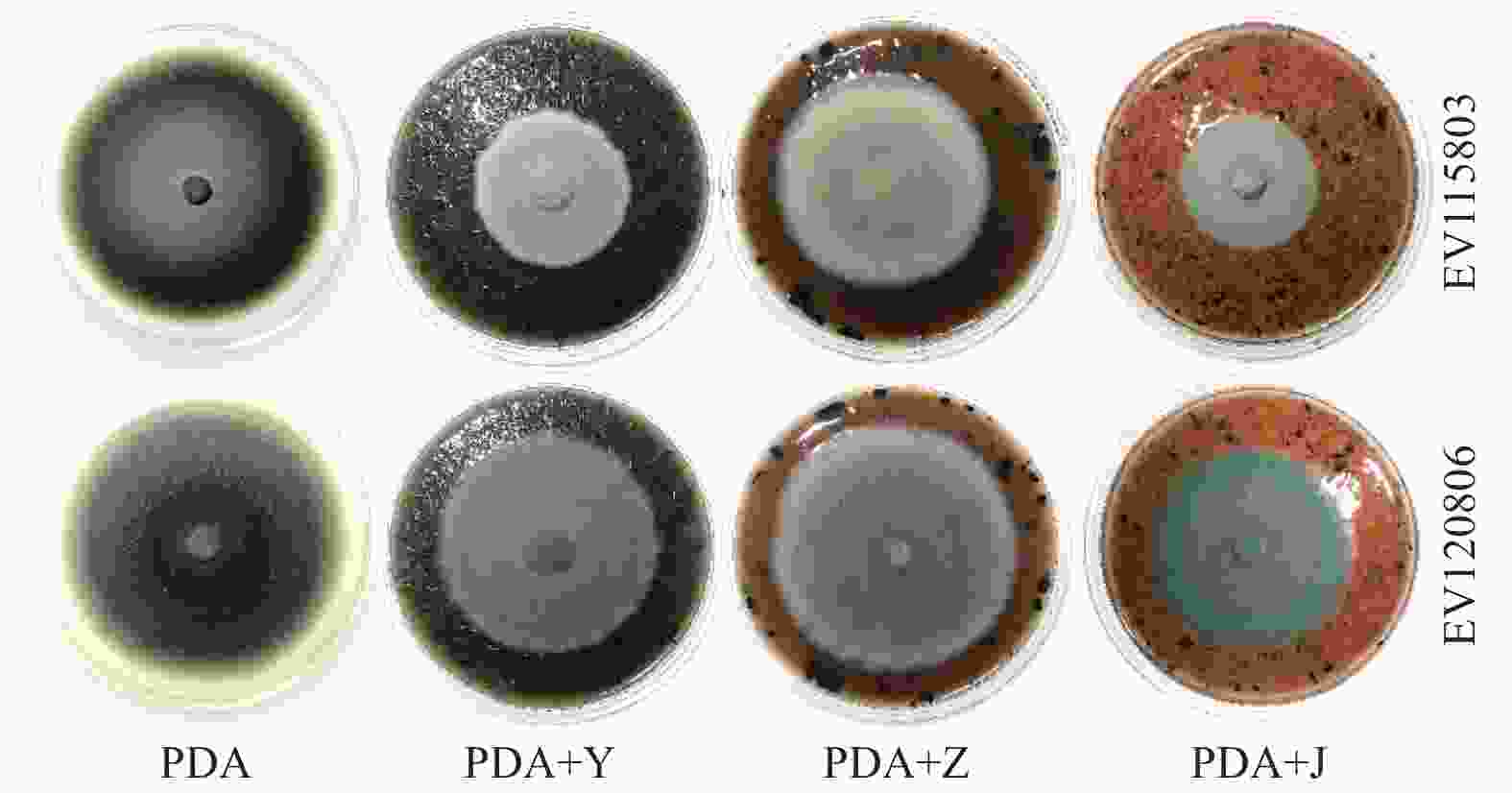
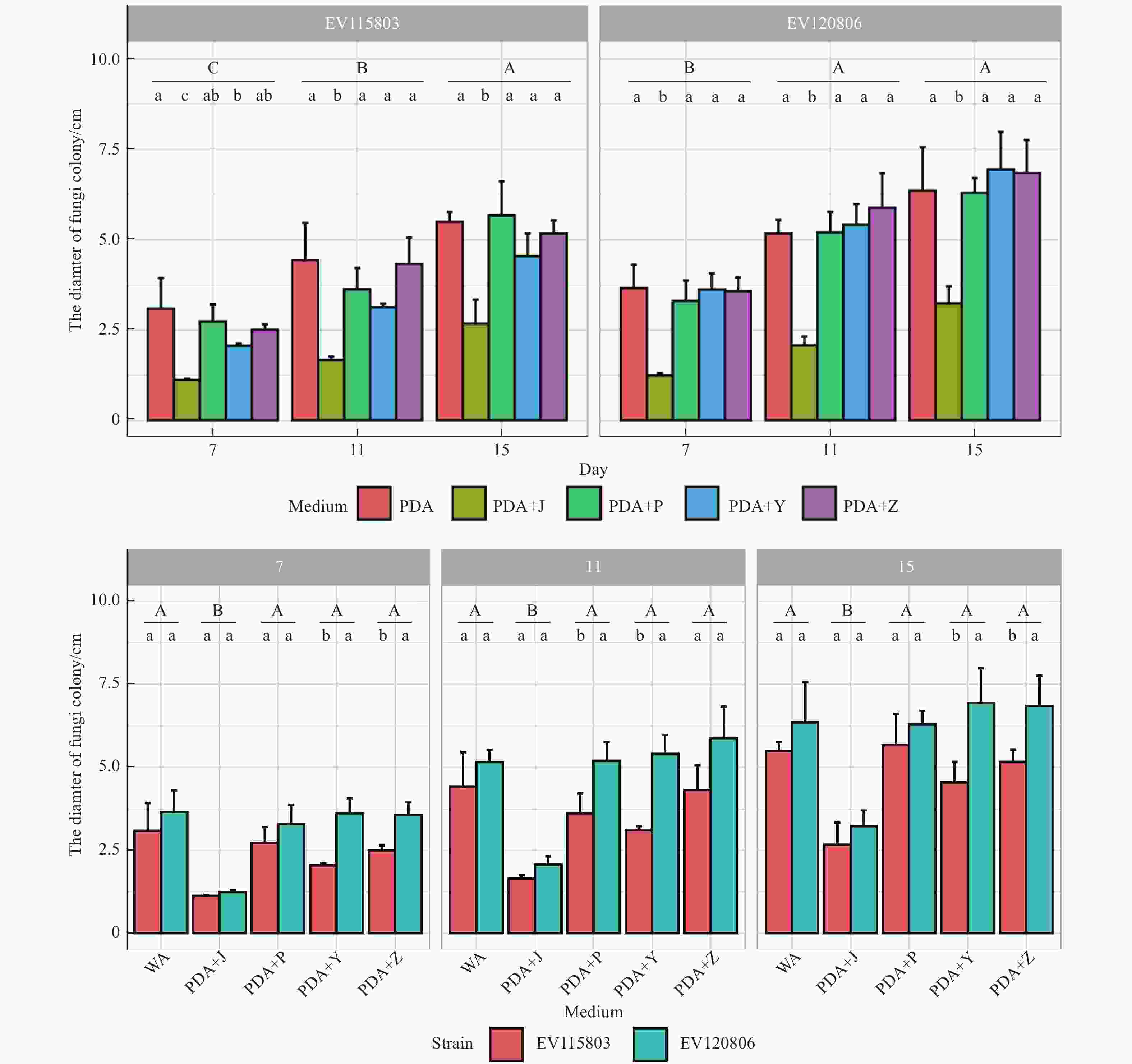
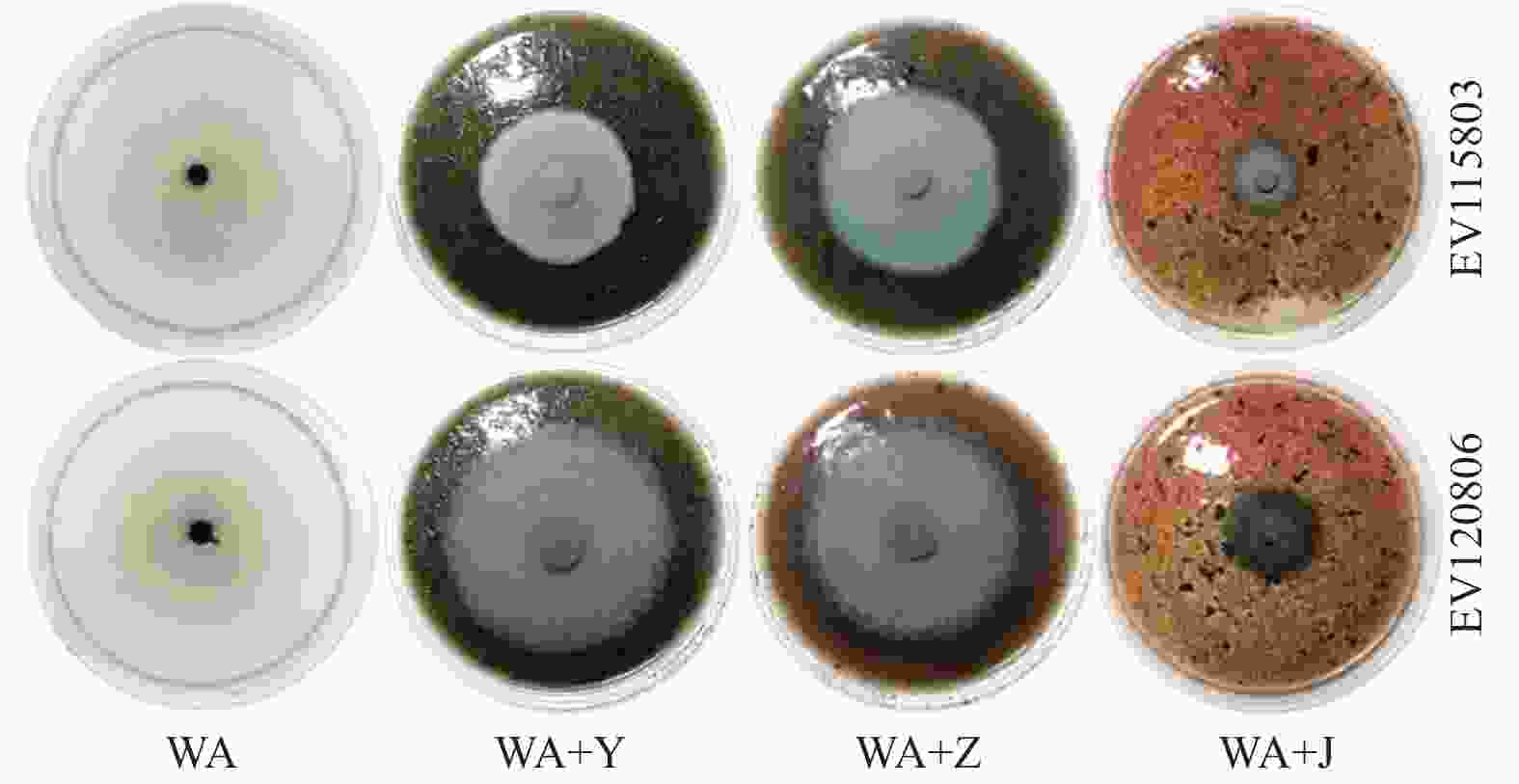
 DownLoad:
DownLoad:


